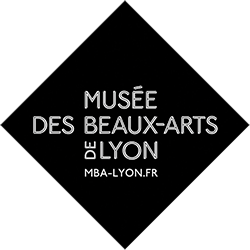Henri Matisse stayed in Étretat twice during the summer of 1920, producing over 40 paintings and numerous drawings on a variety of subjects, some of which were exhibited at the Bernheim-Jeune Gallery in Paris in the autumn of that year. This work, long misunderstood, is still little known today.
In mid-June, the painter first accompanied his daughter Marguerite, who was recovering from an operation, so that she could convalesce there. He discovered the surroundings from a distance and began interior scenes in which the landscape appeared through the window frame, in keeping with a practice to which he was accustomed. The following month, the painter, now alone, ventured outdoors, confronting the motif of the cliffs in a conscious dialogue with the creations of his predecessors, Gustave Courbet and Claude Monet. The forms were simplified and organised in flat planes. The scenes are often enlivened by the activity of the fishermen, while Matisse stays away from the summer people. Inconvenienced by the crowds of tourists, he left the village in August, only to return in September to complete his work in a more peaceful setting. His most original creations consisted of a series of ‘fish painted by the water’ in close-up, which he continued thereafter, renewing the genre of the still life, sometimes against the background of a cliff landscape.
Labels
Henri Matisse
Le Cateau-Cambrésis, Nord (France), 1869 – Nice, Alpes-Maritimes (France), 1954
The Pierced Rock [Étretat, the Porte d’Amont]
1920
Oil on canvas
Baltimore, The Baltimore Museum of Art
The Cone Collection, formed by Dr. Claribel Cone and Miss Etta Cone of Baltimore, Maryland
Henri Matisse
Le Cateau-Cambrésis, Nord (France), 1869 – Nice, Alpes-Maritimes (France), 1954
Étretat, the Laundresses
1920
Oil on canvas
Cambridge, The Fitzwilliam Museum
Bequest of Arnold John Hugh Smith, 1964
Matisse's attention was drawn to the scene of the laundresses on the beach at Étretat, washing clothes in the stream exposed by the low tide. This activity, already frequently illustrated by his predecessors, had grown in importance as the number of holiday resorts and hotels increased. In most of his compositions, he chose to depict human activity, particularly that of the fishermen, while the tourists, who were numerous during the summer season, were absent. Shapes were simplified and the canvas was punctuated by flat areas of colour, which the figures brought to life, in a process that the painter developed even further during the 1930s.
Henri Matisse
Le Cateau-Cambrésis, Nord (France), 1869 – Nice, Alpes-Maritimes (France), 1954
Étretat, the Barrels
1920
Oil on canvas
Stockholm, Moderna Museet
Donation from the Association for the Promotion of Relations between Swedish and French Artwork, 1931
Henri Matisse
Le Cateau-Cambrésis, Nord (France), 1869 – Nice, Alpes-Maritimes (France), 1954
Étretat, the Beach and the Aval Cliff
1920
Pen and Indian ink on paper
Le Cateau-Cambrésis, musée Matisse, département du Nord
Gift of the artist, 1952
Henri Matisse
Le Cateau-Cambrésis, Nord (France), 1869 – Nice, Alpes-Maritimes (France), 1954
Stormy Afternoon, Étretat
1920
Oil on canvas
Cambridge, The Fitzwilliam Museum
Bequest of Stanley William Sykes, 1966
Henri Matisse
Le Cateau-Cambrésis, Nord (France), 1869 – Nice, Alpes-Maritimes (France), 1954
Étretat, the Beach with the Capstan and the Cliff of Amont
1920
Pen and Indian ink on paper
Le Cateau-Cambrésis, musée Matisse, département du Nord
Gift of the artist, 1952
Henri Matisse
Le Cateau-Cambrésis, Nord (France), 1869 – Nice, Alpes-Maritimes (France), 1954
Dogfish
1920
Oil on canvas
Private collection
During his stay in Étretat, Matisse began a series of hybrid works in which he depicted still lifes of fish against a landscape backdrop of cliffs. Interested in this subject, he continued to use it in close-up compositions. Here, dogfish, also known as sea dogs or spiny sharks, pose as models in their own right. To a collector concerned about their fate, the painter recounted how he had bought the day's catch and paid a child to douse the fish in seawater, thus keeping them alive and vibrant, before throwing them back into the water.
Henri Matisse
Le Cateau-Cambrésis, Nord (France), 1869 – Nice, Alpes-Maritimes (France), 1954
Interior, Étretat
1920
Oil on canvas
Berlin, Museum Berggruen, Neue Nationalgalerie, Stiftung Preußischer Kulturbesitz
Loan from the Berggruen family
When he arrived in Étretat in mid-June, Matisse settled into a hotel or guesthouse facing the beach. This painting was one of the first he undertook, in accordance with the ‘framed landscapes’ formula he had been using regularly since 1905. The foreground is that of the bedroom in which his daughter Marguerite is convalescing, asleep. In the background, the landscape is visible through the window, with the beach and the fishing boats. Everything appears to be on the same plane, and the light comes as much from the outside as from the inside, in keeping with a principle that is unique to his work.
Georges Braque
Argenteuil, Val-d’Oise (France), 1882 – Paris (France), 1963
The Cliff at Étretat
1930
Oil on canvas
Private collection
Georges Braque, who spent his youth in Le Havre, was well acquainted with the Normandy coast. However, he decided to leave it for the South of France, but in 1929, he returned for the summer season, undertaking a series of beach scenes. This work, conceived the following year, is one of the few to depict Étretat. He retained the silhouette of the Porte d'Aval and placed two boats on the beach, empty of any human presence, their masts creating large verticals. He played with simplified forms and material effects. Shortly afterwards, he bought a plot of land in Varengeville on which to build a house, which he moved into in 1931.






